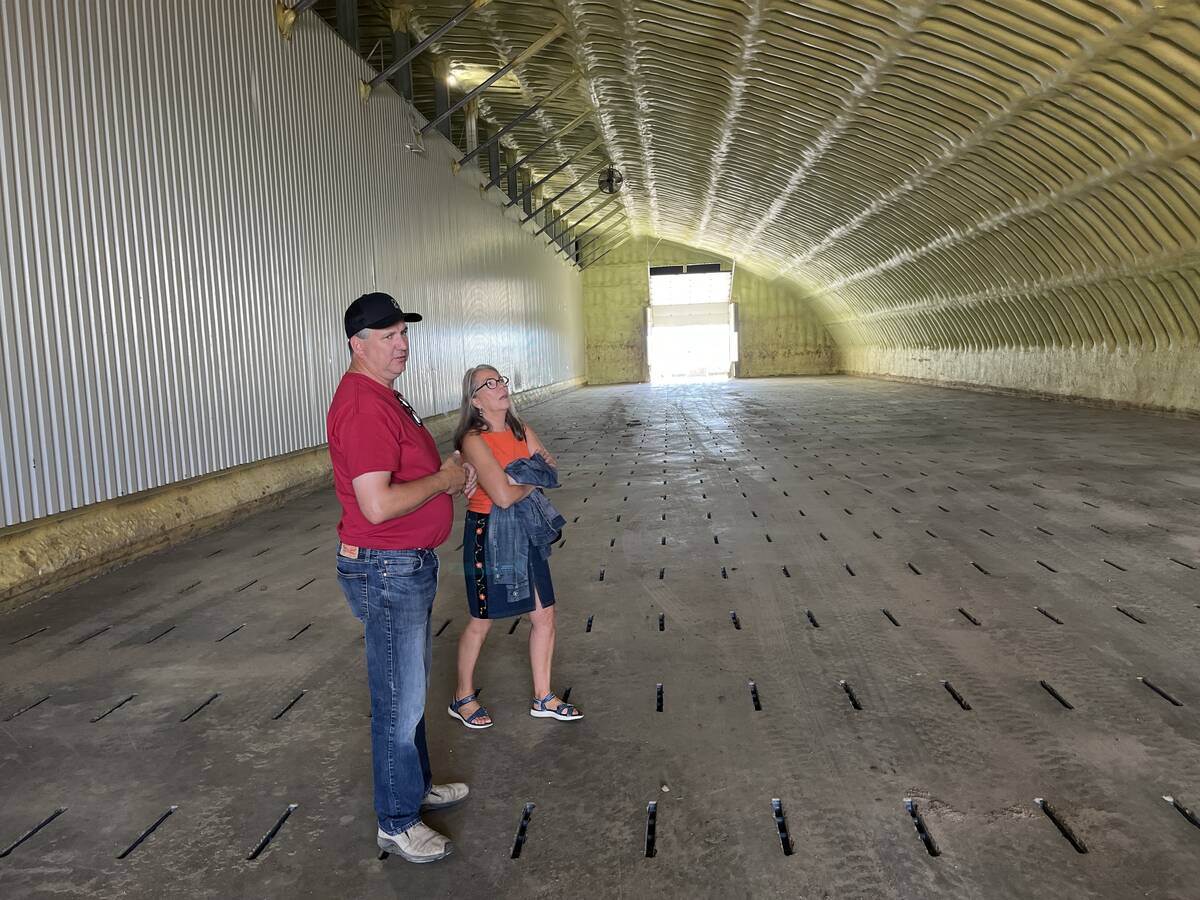Two Rivers Ranch | Operators of 17,000 acre operation make good stewardship and water management a priority
TAMPA, Fla. — Two Rivers Ranch is a living laboratory for grass and water management in central Florida.
“We see our role not in the pounds of beef but in what good stewards we can be with private ownership,” said ranch owner Robert Thomas.
Purchased for 10 cents an acre in 1932 by entrepreneur Wayne Thomas, the ranch has grown to 17,000 acres on two sites, 51 kilometres apart, and stretches across three counties.
Raising cattle in this subtropical environment is a challenge, whether it is growing grass in fine white sand or coping with drought and floods in the same year. The ranch owners are further tested as they try to maintain a large agricultural operation 20 minutes from downtown Tampa.
Read Also

Potato farm requires year-round management
The most recent Open Farm Day in Alberta showcased agricultural producers across the province educating the general public about the process that is required is to get food to their table.
“If we draw a one hour circle around where we are right now, there are seven million people in that circle,” said Thomas, whose grandfather bought the original property.
Today he operates the place with his sisters and son, Wayne.
“This is the epicentre of the urban-rural interface battle right here at Two Rivers Ranch,” he told a tour group from the National Cattlemen’s Beef Association in early February.
“Our problem is where our rural lifestyle is butting up against a highly intense urban lifestyle.”
The ranch raises crossbred cattle, timber and oranges and sells hunting leases for white-tailed deer, feral hogs and the Osceola turkey, a subspecies of wild turkey.
In 1989, the ranch signed a deal with a water bottling company to produce Zephyrhills Spring Water, sold throughout the state.
“Thirty years ago, nobody would have dreamed anybody would drink water from a bottle,” he said.
The water comes from deep springs that release 30 million gallons daily into the Hillsborough River. The river source is at the ranch and is a main water supply for Tampa.
The family built an education centre near the river called Crystal Springs Preserve to promote water and land conservation.
About 50,000 schoolchildren visit each year to learn about environmental appreciation and management.
Besides grass and water improvements, they also increased water fowl and wildlife habitat and received numerous awards, including recognition from the National Audubon Society for work in restoring wetlands.
Protecting the water and growing more grass are the primary focuses of their operation.
“We can do everything right, but if we don’t have the water we don’t have the grass,” said Thomas.
The ranch averages 1,450 millimetres of rain per year, but it has been either flood or drought in recent years.
Parts of the ranch are knee deep in water when it floods.
Cattle graze the entire ranch, which includes forest and swamps as well as native and improved pastures.
Cattle are not allowed into the orange groves.
They are provided with loose salt and eat three times as much salt in the hot summer months as they consume in winter. Mineral blocks with trace minerals are also offered. The supplements are formulated for this area so that they receive more vitamin A and copper.
About four acres per cow unit are allowed on fertilized, improved pasture.
The family has large tracts of Bermuda grass and also plants rye for winter feed.
Stocking density can be three to 10 acres depending on grass and water availability.
Pastures are periodically disced for aeration because the land can become root bound.
“If you start seeing weeds, it is time to tear it up,” said ranch manager Johnny McCarthy.
The cattle are typically Hereford and Red Angus with some Brahman influence so that they can adapt to the subtropical climate of heat, humidity and insects.
Insects are a problem, and treatments are offered three times a year: injectable tick control in July, drenches in October and dewormers and pour on treatments later.
Bulls are turned out with the heifers Feb. 15 and the cows a month later.
The ranch has a 100 day calving season that starts before Christmas.
The cows are moderate sized, weighing 1,100 to 1,150 pounds. They wean 600 lb. calves.
There are no feedlots or processing facilities so calves are shipped west to Texas and Kansas in 50,000 lb. loads. All the cattle have source and age verification.
The family has other business interests, including mining, a deep water port and residential development interests, but the intent is to preserve this property for agricultural production.
“Our profit in Florida is mainly driven by the conversion of agricultural space into mixed use and residential communities so over the years we have developed property and sold land for development,” Thomas said.
Another concern for this multigenerational ranch is dealing with farm succession and the federal estate tax.
“The biggest convertor into agricultural land for other uses has been the death tax,” he said.
Families are often forced to sell land to pay the inheritance taxes after a principle owner dies.
“The success of our ranch to continue inter-generationally is how well we deal with that issue,” he said.

















